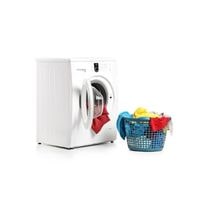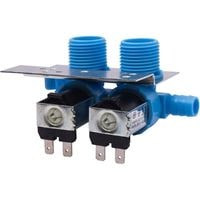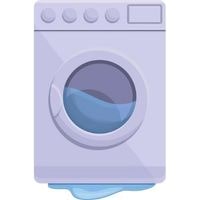Washer Overflowing With Water. If you’re unpleasantly surprised with your washing machine starting to overflow, don’t worry. You can do some troubleshooting yourself and repair the problem fast.
When your washing machine overflows it is not always due to a “gasket” or something that is broken, it could also be caused by a defective switch or water inlet valve. By identifying the source of the issue you can save some time and money.
Washer Overflowing With Water

If the washer continues to fill with water even when it is not getting power, this is indicative of a defective water inlet valve that should be replaced.
If the water inlet pressure switch fails, the washer may continue to overflow, causing you to incur additional repairs on top of possibly ruined clothing.
In this article, we will discuss how to fix a washing machine that overflows with water.
Pressurized Switch Problem
The pressure release valve shuts off the flow of water when the water level reaches its threshold, preventing backflow and leakage.
The pressure release valve allows for air to be separated from the water supply during filling, and if clogged, or improperly installed will prevent the valve from functioning properly.
Before replacing the pressure release valve, check that the clear tube attaching is free from debris and is not leaking.
Low water pressure problem
The water pressure to the valve might be too low. The valve requires a minimum of 2 bars to shut off fully.
If the pressure at the point where the water enters into the valve isn’t strong enough, or if it’s not consistent, then it may fail to fully shut off and leaks might occur when that happens.
Check under the bonnet (or whatever you call it) while you’re at it to see if there’s dirt in there that could be weighing down on things or hitting against exposed metal surfaces, thereby putting strain on them.
Water Inlet Valve Issue

Try shutting the water off that goes into your washing machine for what should be the filling or washing cycle.
If it goes on to fill and wash, this indicates that your water inlet valve is defective.
And we can say that this could be from a broken hose or even a worn-out valve. Replacing it is super easy.
FAQs
Is there a reason why a washing machine would overflow?
The water inlet valve may not be closing properly. Verify that the pressure is at 20 psi or higher, and then shut off the power to the washer again while you observe the valve. If you notice that the valve closes with difficulty, this may indicate a problem with either a loose wire on one of the valves or a dirty stem starting the seat.
How can I tell if my inlet valve needs to be replaced?
Signs of an inlet valve problem include leaks that fill the dishwasher when not running, the dishwasher filling too slowly when in use, or the dishwasher not filling at all.
Leaks that end up outside of the dishwasher may also indicate a problem with your inlet valve.
If you are dealing with this, we recommend calling a professional technician and letting them assess your situation to determine how to avoid additional water damage.
How does a washing machine’s water inlet valve work?
The water inlet valve on your washing machine is the most working part of the whole appliance.
It comes in a few sizes and models, but essentially it’s connected to two water hoses that help get the job done and deliver both hot and cold water to all these pipes as well.
If you ever have problems with it not working right, try seeing if you can open up a manual or guide on how to fix things like this because more often than not the process itself is quite simple.
Washer Overflowing With Water
Related Guides
- Washing machine won’t spin
- Samsung Washer Not Filling With Enough Water
- GE washing machine troubleshooting
